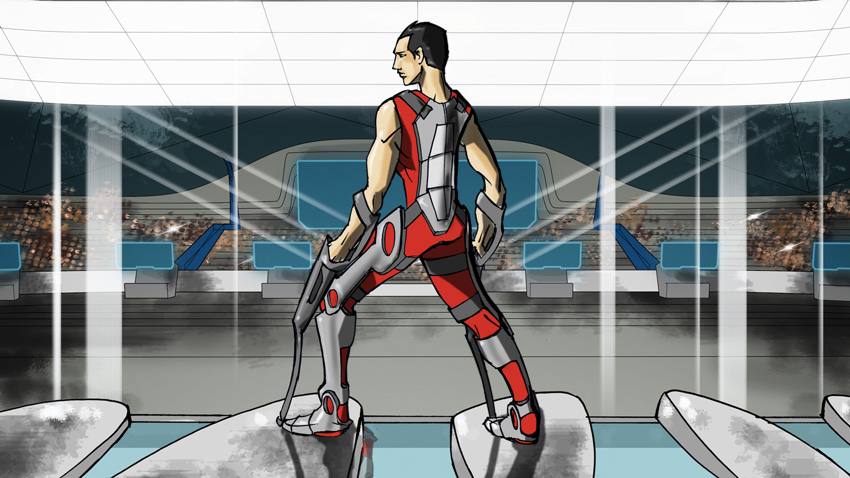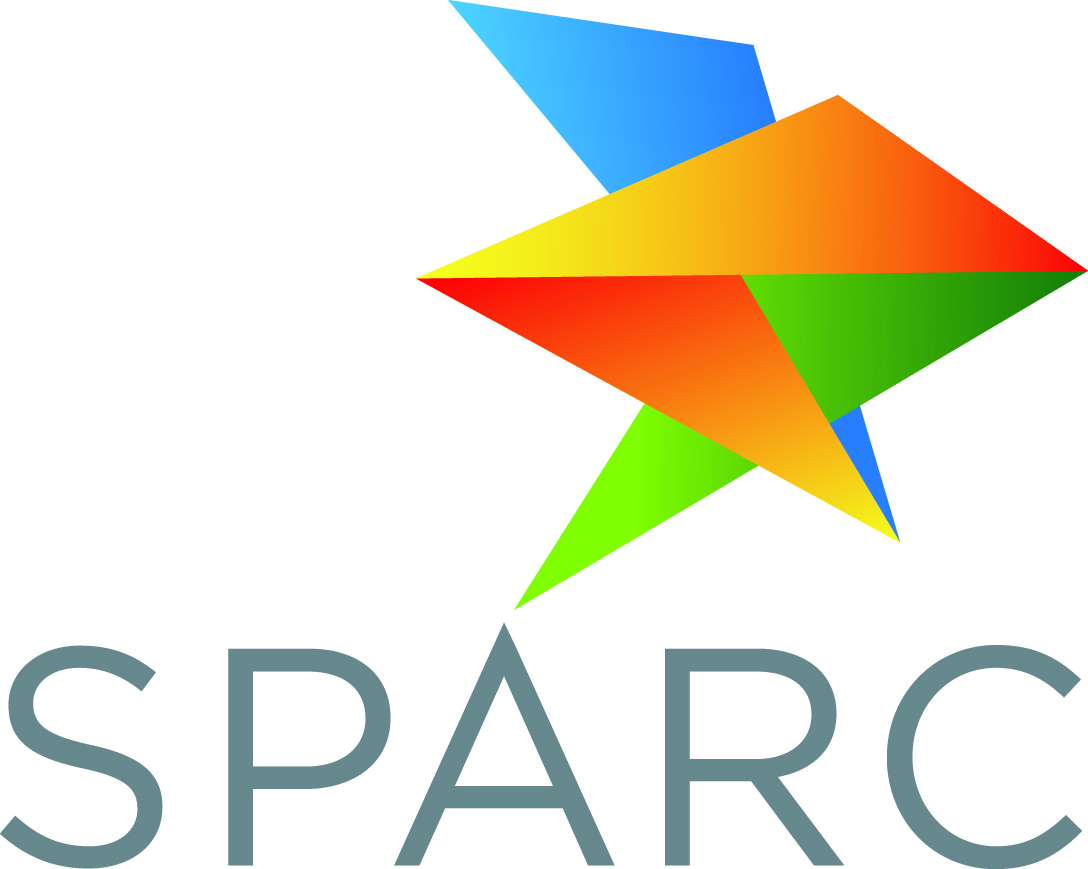
Robohub.org
Exoskeletons: From helping people walk to controlling robots in space

Credit: Cybatholon
44 million people aged between 15 and 64 report a basic activity difficulty, with the most prominent disabilities centered around lifting and carrying, walking, bending, sitting or standing. Strokes alone touch 1.1 million Europeans each year, often resulting in a loss of upper- or lower-limb mobility. Helping the young and old regain mobility is therefore a top priority with important social and economic impact.
Exoskeletons, as the name indicates, are external support systems for the body. As a first step, they provide assistance for professionals in rehabilitation centres by physically supporting patients and guiding them through exercise sessions. Their use helps avoid challenging ergonomics for the therapists, and provides valuable data and control of motion for the patients. Swiss-based company Hocoma is a leader in a field, having deployed its Lokomat robotic treadmill in 2001 after years of research at Balgrist University Hospital in Zurich. The robot is used to train patients with movement disorders caused by stroke, spinal cord injury, traumatic brain injury, multiple sclerosis, or Parkinson’s disease. The system consists of a body-weight support system which helps patients support their full weight, a treadmill, braces around the legs for guidance and actuation of movement, and a virtual reality system to provide feedback. The company has since branched out to tackle low-back pain therapy, as well as arm and hand therapy.
A new spin-off of the Universidad Politécnica de Madrid, Aura Innovative Robotics, instead aims to provide assistance in the rehabilitation of patients suffering shoulder injury. Their exoskeleton Orte, will help assess the extent of the injury and perform rehabilitation exercises through an array of motion and strength sensors.
Co-founder Cecilia Carcia Cena tells us “thanks to a sophisticated musculoskeletal model of the arm, the practitioner can evaluate the condition of the patient, gaining valuable insight for the diagnosis process, and then create a customized rehabilitation routine for each patient that will be guided by the robot, monitoring progress during execution.”
Beyond specialized centers, the dream is to see exoskeletons available for daily use in the home. As outlined in the MIRAD project, this causes challenges related to safety, wearability, energy autonomy, intelligent dynamic interaction with the human, and psychological aspects. The project aims to design a bilateral active lower-limb exoskeleton to assist people with functional weakness. Their exoskeleton designed to help people get up from a sitting position was recently tested in research trials at KU Leuven with healthy participants aged 65 and above.
Walking is the next frontier in the SYMBITRON project, which stands for “Symbiotic man-machine interactions in wearable exoskeletons to enhance mobility for paraplegics”. The goal is to develop a safe, bio-inspired, personalized wearable exoskeleton that enables spinal cord injury patients to walk without additional assistance, by complementing their remaining motor function. Their Mindwalker exoskeleton was demonstrated in the laboratory on 6 volunteers with spinal cord injury. One goal of the project was to explore the use of a dry, lightweight, wearable EEG cap to read brainwaves that control the motion of the exoskeleton. A virtual reality training environment was used to help the patients generate the correct brain signals.
“New exoskeleton functions are continuously being explored and added, such as autonomous operation, balance support capacities, and collaborative controlled operation. Such research is receiving important funding from the European Commission, through projects such as BALANCE or SYMBITRON”, says Dr. Jan Veneman, Tecnalia Research and Innovation, and project coordinator of the BALANCE research project. “After the FDA approval of some autonomous exoskeletons for home use in 2016, the market is starting to see exoskeletons as a reality instead of as science fiction. This has greatly boosted the interest from different market segments for exoskeleton technology and other wearable robots”.
And these exoskeletons come in many shapes and materials. Cybatholon, the first championship for athletes with disabilities on 8 October 2016 at ETH Zurich Olympics will see at least 11 teams battle it out in a powered exoskeleton race. In fact, a current trend has been to move away from bulky structures to make soft exoskeletons that feel more like a pair of trousers than a machine made of bolts and metal. Although this doesn’t allow for full powering of walking, it may help give an extra boost to those with weaknesses. In particular, it’s being seen as a way to help the silver generation remain independent through increased mobility. Bionic power trousers are being developed as part of a major collaboration in the UK between the Universities of Bristol, Leeds, Nottingham, Southampton, Strathclyde, Loughborough, and the West of England. The University of Salford has a soft exoskeleton for the hand, which looks like a smart glove driven by pneumatics muscles.
The WALL-X exoskeleton developed by Ghent University shows what a minimal exoskeleton might look like with a simple pneumatically powered system that assists ankle push-off, thus making walking easier. Whatever the solution adopted, it’s important to understand the interactions between the human body and the exoskeleton. Danish company AnyBody is helping with their sophisticated simulations of the human body.
Exoskeletons are also seen as a way to improve working conditions for jobs that are ergonomically challenging. “Low-back pain is the leading cause of worker absenteeism after the common cold, accounting for 15% of sick leaves and hundreds of millions of lost work days annually”. The Spexor Spinal exoskeleton aims to prevent low-back pain and improve job reintegration for those suffering from injuries. Unlike most exoskeletons that focus on upper- and lower-limb mobility, this robot focusses on the spinal cord. The project started in January of 2016, so it’s still in the early days of development.
Seeing this opportunity, Swiss startup Noonee is in the business of improving working conditions with their “Chairolution”. “The Chairless Chair is a wearable sitting exoskeleton for people working on construction lines that is designed to allow movement while still providing enough support to prevent the repetitive stress and health problems that are so common in this kind of work.” The exoskeleton was tested with German car manufacturer Audi last year.
Another exoskeleton being tested in the automotive industry is the ABLE upper-limb exoskeleton used at the PSA Peugeot Citroen factories and now commercialised by Haption. The robot was developed by the French Atomic Energy Commission (CEA) to compensate arm and tools loads. The team behind ABLE also demonstrated a lower-limb exoskeleton at Innorobo this year commercialised by the company RB3D.
Finally, exoskeletons are being used to intuitively guide remotely operated robotic arms in extreme environments. The X-Arm-2 Exoskeleton master device was design by the European Space agency to control an ergonomic, fully-actuated haptic robot. Force feedback from the robot is then provided to the operator to improve control. Such setups are being considered for robotic surgery, or nuclear applications where fine precise motor control is required.
Overall, the aim is not to develop super-human capabilities, but to provide mobility for those who need it, improve challenging working conditions, and empower new applications in teleoperation. There are still many challenges ahead as we improve our understanding of basic biomechanics, human-robot interfaces, and the control of such complex systems.
Read the previous articles in the series here.
The ten-part series on European Robotics is published regularly on the SPARC website and Robohub. Funding for the series was provided by RockEU – a Coordination and Support Action funded under FP7 by the European Commission, Grant Agreement Number 611247.
See all the latest robotics news on Robohub, or sign up for our weekly newsletter.
tags: robohub focus on european robotics




